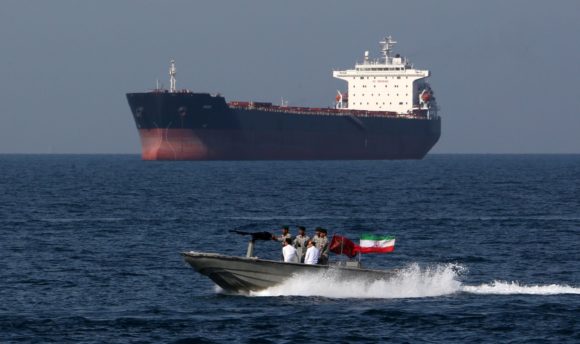Following weeks of mounting tensions in the Persian Gulf where vessels have been attacked and an oil tanker has been seized, recent news reports reveal that shipowners are trying minimize risk – by turning off their transponders and changing their routes in order to avoid detection by the Iranians. But other risks — collusion risks — are rising, warns a legal expert.
“With the escalating tensions in the Gulf, shipowners are looking to boost safety measures when navigating the shipping lanes in the Strait of Hormuz and the adjacent waters,” said Richard Gunn, master mariner and partner in Reed Smith’s global Transportation Industry Group. Reed Smith is a London-based law firm that advises the transportation industry.
“With the naval choke point consisting of territorial sea of either Iran or Oman, it seems that a number of shipowners have attempted to reduce the risk of seizure by avoiding Iran’s waters all together and some have resorted to turning off transponders to avoid detection,” he said in emailed comments.
He noted that avoiding Iran’s waters present its own problems.
“To do this, they would need to sail across the outbound lanes when heading into the Persian Gulf but this route can be hazardous due to the sheer volume of traffic passing through…,” Gunn explained.
In addition, such a route change is a breach of an international convention that requires a vessel to keep to the direction of traffic flow in its lane, he said.
“Ships heading out to the Gulf of Oman would need to hug the Omani coast to stay in Omani waters; in previous disputes the Omani Government tended to require vessels transiting the straits to keep a safe distance from their coast,” Gunn said.
“There is a concern that, at the very least, avoidance of Iran’s waters in this way could congest an already busy channel, increase collision risks particularly with a lack of AIS data for transiting vessels, and slow the travel time through the area,” he said. (The automatic identification system, or AIS, is the system that uses transponders to track vessels.)
Related:
- Oil Tankers Cut Navigation Risks in Strait of Hormuz by Vanishing from Tracking Systems
- U.S. Urges Ships to Keep Tracking Devices Turned on for Safety, Transparency
- Oil Tankers Steer Clear of Middle East Refueling Hub As Attacks, Insurance Costs Rise
- Insurance for Middle East Oil Shipments Soars to More Than $500,000
- Oil Shippers Continue Sailing Through Strait of Hormuz – with Heightened Security
- War Risk Insurance Premiums Surge for Oil Tanker Owners After Gulf Attacks
Topics Trends
Was this article valuable?
Here are more articles you may enjoy.



 High-Net-Worth Risk Appetite Drops as Some Regions Show Stabilization
High-Net-Worth Risk Appetite Drops as Some Regions Show Stabilization  Cloudy Future for Bourbon Has Jim Beam Closing Distillery for a Year
Cloudy Future for Bourbon Has Jim Beam Closing Distillery for a Year  Abundant Reinsurance Capacity Accelerates Market Softening During 1/1 Renewals
Abundant Reinsurance Capacity Accelerates Market Softening During 1/1 Renewals  Disney Worker Injured Trying to Stop Runaway Boulder at Indiana Jones Show
Disney Worker Injured Trying to Stop Runaway Boulder at Indiana Jones Show 

